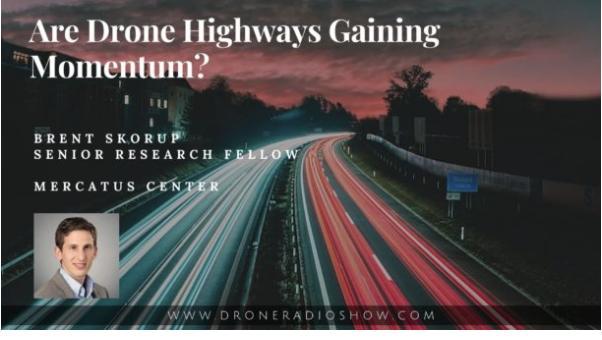The Mercatus Center on the Drone Radio Show Podcast:
Are Drone Highways the Future?
“It’s important that State, Local and Federal officials prepare a policy framework that will recognize the legal realities and expectations of residents, but also finds a way to have corridors where companies can know with certainty, that they can operate at high throughputs. ” – Brent Skorup
The growing use of unmanned aerial vehicles has spurred a new UAS framework called “highways in the sky.” Drone highways in the sky are essentially designated air corridors that are reserved for the exclusive use of unmanned aerial vehicles. The idea is that these corridors would allow drones to fly autonomously, without the need for direct human supervision, while avoiding other aircraft and structures in the national airspace.
One of the key benefits of drone highways in the sky is that they could significantly increase the efficiency and safety of drone operations. By providing a clear and well-defined path for drones to follow, drone highways could reduce the risk of collisions and enable drones to fly faster and more efficiently, potentially opening up new opportunities for commercial drone use. But the concept is still in the early stages of development, and there are many different ideas and approaches being explored by researchers, regulators and industry stakeholders.
Brent has published several research papers on the topic of drone highways in the sky. His research has covered the economic, regulatory, and legal opportunities and constraints relating to drone highways. In 2019 and 2022, he published a survey that assessed the regulatory environment for drones in all 50 U.S. states and evaluated each state’s readiness to support the growth and development of the drone industry.

